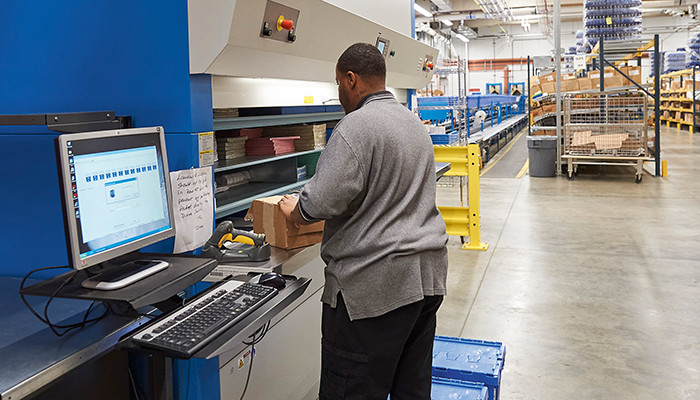One very important example is the medical center’s inventory management system, a platform that allows it to closely track changing needs for a wide range of supplies. For high-volume, low-dollar commodities, Gates’s team relies on a two-bin Kanban system. As soon as a bin of items is emptied, a worker scans it to automatically alert the supplier. “The order flows from the inventory management system to the ERP, which then creates a purchase order,” he says.
As that order is filled, the workers in the storage room — there’s one in each of the organization’s hospitals — simply pull items from the second bin.
It’s a somewhat different process for the high-dollar items Cleveland Clinic needs in its procedural units. Stents and hip implants, for example, are registered in the inventory management system with a radio-frequency identification (RFID) tag. When a product is used, the clinician scans the tag to automatically deduct it from the inventory and capture data for the patient’s medical record.
“Lot information, serial number, the item’s expiration date — it allows us to replenish the item as needed, but it also makes documentation much easier because the clinician can do everything in one place, and it all goes into the electronic health record,” Gates says.
EXPLORE: How healthcare organizations can benefit from real-time supply chain visibility solutions.
Managing Healthcare Supply Chains With a Tech-Driven Process
While Gates and his colleagues at Cleveland Clinic make up one of hundreds of supply chain teams at health systems across the U.S., they stand out for the accolades they’ve received from industry peers and independent analysts. Gartner awarded Cleveland Clinic the No. 1 slot on its annual Healthcare Supply Chain Top 25 list in 2021.
Gartner highlighted the Cleveland Clinic team’s exemplary leadership and collaboration with other departments, and pointed to its use of self-driving vehicles to move materials and supplies. The health system was investing “locally and with diverse suppliers,” Gartner notes, and its successful implementation of RFID technology had not only improved patient safety but was “capturing revenue and reducing loss and expiration.”
All of this was taking place against the backdrop of the COVID-19 pandemic, and Cleveland Clinic was not immune to the supply chain challenges all healthcare organizations faced at the time. Still, Gates says, his team held its own, largely thanks to the systems in place.
“With the visibility we had, we kept our inventory levels in check by not overbuying and by making sure we were covered for spikes in demand,” he says. “When you’re using technology to enable the process — to track real-time usage and make sourcing decisions — that really helps create resiliency.”












